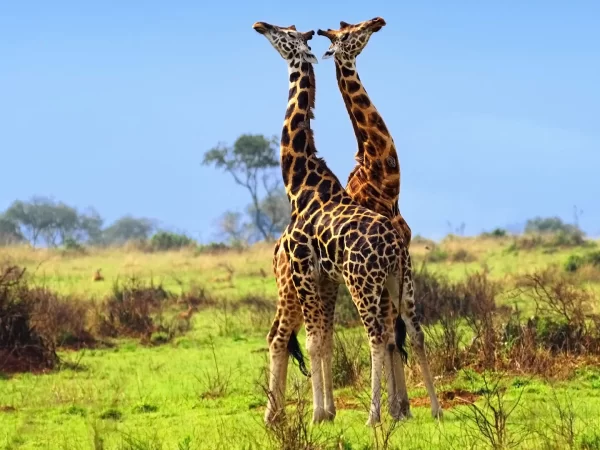
Murchison Falls National Park Conservation Vs Oil
HARDLY had we moved a few metres away from Wanseko landing site in Buliisa district, when Elvis Muhangi, my guide, turned and whispered: “Shoebill”.
“He is out there on the swampy patch to the left,” Muhangi pointed out, as he paddled through a tiny channel separating two large marshes. In this marshy delta is where chances of encountering the shoebill stork, a wild bird about the size of a turkey hunting for either insects, frogs or tiny fish and sometimes snakes are high.
“Visitors from all over the world come to see this rare bird,” says Muhangi. “They feel like conquerors when they encounter the shoebill stork because it is only found in a few places in Africa.”
The excitement over the shoebill faded as frogs croaked and insects hidden in the expansive marshland sang different melodies. They were probably ushering us into the heart of the unspoilt Nile Delta, together with spectacular Uganda wildlife and pristine scenery. This brought me face to face with the wild beauties of the Nile Delta, one of the most treasured parts of the earth, where River Nile meets Lake Albert.
A short distance away, fishermen who eke a living out of the delta were perched on wooden canoes, excited by the day’s catch. At the heart of the Nile Delta, large water birds, probably in thousands, gathered for easy pickings. How many birds are in this delta, I wondered. Their huge number does not seem to matter because there is plenty for the creatures to eat. As we moved around the delta, most of the smaller birds were flirting and others making acrobatic landings like their cousins, the aeroplanes. It was like the Biblical Garden of Eden.
This Uganda wildlife paradise, according to Gard Mugiri, the warden incharge of monitoring at the Uganda Wildlife Authority (UWA), has always been a battle ground for wildlife rangers and fishermen who have depleted fish from the lake and now sneak into the delta to catch bigger fish. A big part of the delta is protected as Murchison Falls National Park.
Other than the fight with fishermen, conservationists are facing a bigger hurdle since prospectors predict that wildlife beauties of the delta could be sitting on one of the most sought after treasures, oil. The water has many shiny blue patches, which oil experts call oil seeps. “We could be having more oil in the delta than in any other part of the country. But this place is also a delicate ecological system needed for the conservation,” says Reuben Kashambuzi, an advisor in the Ministry of Energy. Murchison falls national park
THE DELTA IS A SANCTUARY FOR WILD ANIMALS
River Nile drops much of its silt in Lake Albert. When the river reaches the delta, it splits into more than 50 channels that either lead into the wider Lake Albert near Wanseko, or Panyimur located in Nebbi district or the Albert Nile on its way to the Sudan border.
Over time, this has created floating islands, home to many aquatic plants. The islands have become an attraction to wildlife, including large mammals such as elephants. “Animals like elephants barely move four kilometres away from where there is plentiful supply of water in the dry season.”
DELTA IS KEY TO TOURISM AREA
The wildlife species flocking the delta have also been accompanied by tourists. Mugiri says the delta is gazetted as a tourism zone, together with the neighbouring Buligi sector, according to the Uganda tourism master plan.
“The delta has all the big mammals,” says Mugiri. “Because of the different attributes, the delta is attractive to many species.” Over 80% of the tourists visiting Murchison Falls National Park go to the delta and the nearby Buliigi sector because of the many species in the area, according to Mugiri.
But the oil installations could be causing negative visual impact and the visitors who come expecting to experience a true wilderness may feel cheated, according to Mugiri.
To minimize the negative impact, the oil operations in Murchison falls national park take place in seasons when tourism is low and UWA also demands for immediate restoration.
“We are also demanding for surface installations,” says Mugiri, adding that they will not abandon Buliigi sector.
In addition, UWA has started creating an alternative tourism circuit around the Murchison Falls National Park, which is expected to diversify the tourism attractions.”
STUDIES TO ESTABLISH THE IMPACT OF OIL ON MIGRATORY ANIMALS ONGOING
According to park authorities at Murchison Falls National Park, there is ongoing research to study the impact of oil operations on animal movements and behavior in the park. Four elephants have been fitted with collars containing satellites in research conducted by UWA and the US-based Wildlife Conservation Society. He also pointed out that two lions have been collared to monitor the impact on the big cats.

